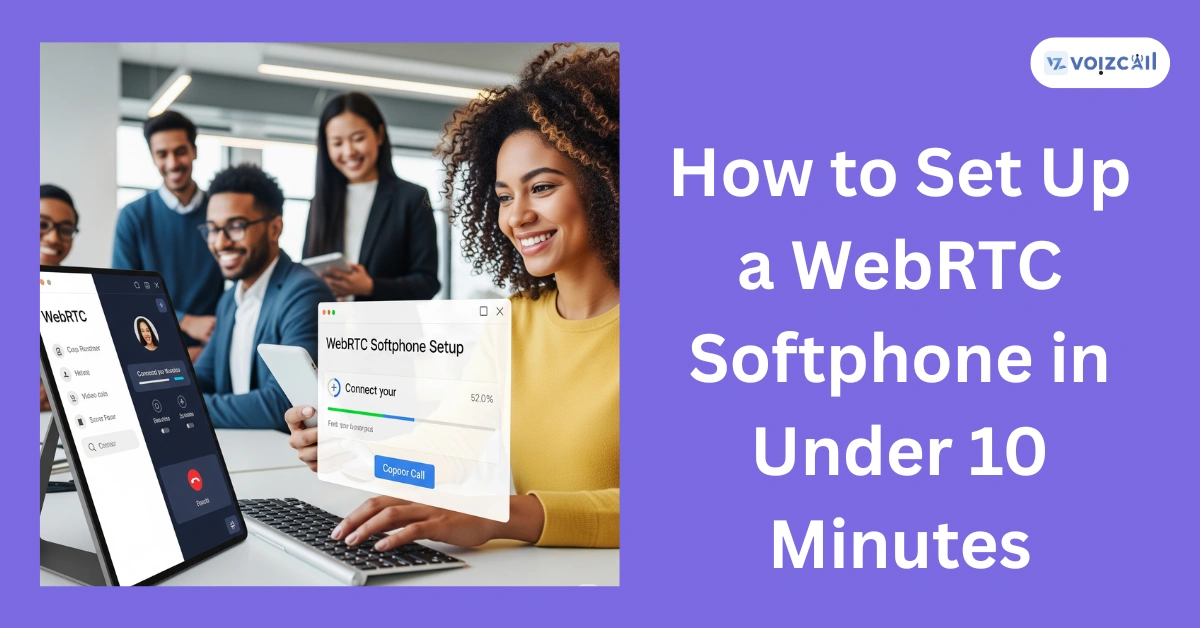


30/Jun/2025
Imagine making high-quality phone calls using just your internet browser — no special hardware, no complex setup. Sounds cool, does not it? That is precisely what a WebRTC Softphone will do.
It is fast, cheap, and convenient to install the WebRTC softphone, be it at your small business or when working remotely. Today in we are going to take you through a step by step WebRTC softphone configuration using less than 10 minutes!
Let us keep it simple before we get down to the setup.
A softphone based on WebRTC is a WebRTC (Web Real-Time Communication) based software phone. This enables you to place voice and video calls directly in your web browser, there are no physical desktop phones to connect.
It fits perfectly in business, the call center environment, or in remote workers where the connection must be the connection made browser-based.
What You will Need
To kick off you will need:
Call / Email for Sales Inquiry Today
Internet-enabled device (laptop, desktop or tablet)
A contemporary web browser (such as the Google Chrome or Firefox)
Speakers (or a headset) and microphone
SIP account details from your VoIP provider
Access to a WebRTC softphone app or platform
Simple How-To Guide with WebRTC Softphone
We shall now undertake the set up process through a basic guide:
Step 1: Selecting an A WebRTC softphone platform
There are many softphone solutions out there. Look for the best WebRTC softphone for business use — one that supports SIP, works in browsers, and is user-friendly. Some popular options include:
MicroSIP WebRTC
Jitsi Meet
Zoiper WebRTC (browser)
Custom-built WebRTC solutions
Choose a provider that offers demo or free trials for testing.
Step 2: Install or Access the WebRTC Softphone
In many cases, you don’t need to install anything! All you have to do is to log in to your softphone dashboard with your browser.
When it comes to using a WebRTC app that has to be set up, as well as using their instruction to install WebRTC softphone or (allow the application to access microphone or other capabilities to use wireless) browser permissions.
Step 3: Enter Your SIP Credentials
This is where your VoIP provider details come in. Most softphones will ask for:
SIP username
SIP password
SIP server or domain
You’ll find this in your VoIP provider dashboard or welcome email.
If you’re unsure, refer to their WebRTC phone configuration guide or contact support.
Step 4: Configure Audio & Video Settings
Once logged in:
Choose your microphone, speakers and camera (if you use video).
Set echo cancellation and noise reduction.
Test your setup with a sample call or “Echo Test” feature.
Step 5: Start Calling!
That’s it — you’re ready to go! You can now:
Make and receive calls
Use voicemail
Hold or transfer calls
Start video calls (if supported)
View call logs in real-time
It’s that simple. You now know how to configure a WebRTC SIP client with zero stress.
Why Use WebRTC Softphones?
Here are a few reasons why people love it:
Low cost – No expensive hardware needed
Accessible – Works from anywhere with internet
Secure The calls are more secure as they are encrypted end to end.
Instant setup – No complex installation required
Scalable – Perfect for teams of any size
Bonus Tip: Make It Business-Ready
If you're setting this up for work or a team, choose a provider that offers:
Multi-user management
CRM or helpdesk integrations
Advanced call routing
Dashboard analytics
This transforms your basic setup into a full communication system.
Final Thoughts: From Setup to Call in 10 Minutes
Now you know exactly how to install a WebRTC softphone, configure it, and start making calls — all in under 10 minutes. Whether you’re looking for a fast way to connect your remote team or a low-cost business calling solution, WebRTC softphones are the way forward.